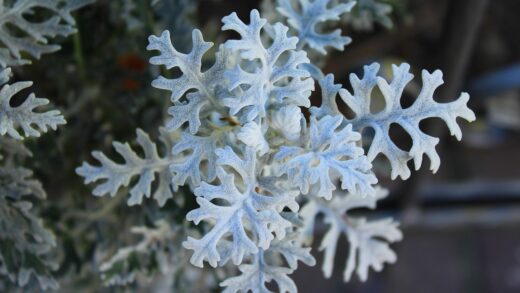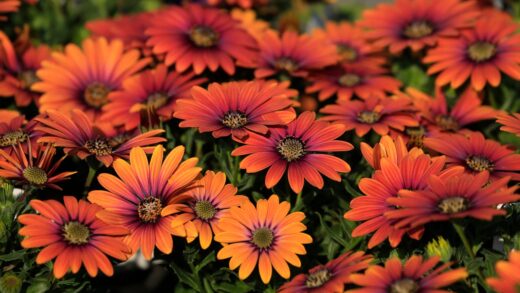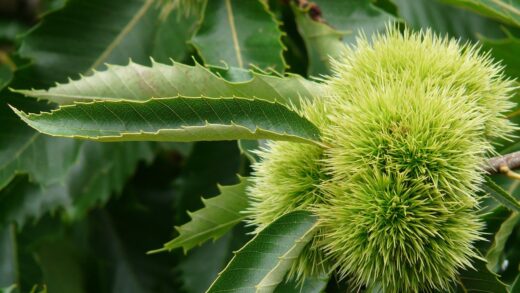One of the most appealing attributes of the Caryopteris shrub is its modest appetite, as it generally thrives without a demanding fertilization schedule. This plant is well-adapted to average or even lean soil conditions, and in many garden settings, it will perform beautifully with little to no supplemental feeding. In fact, an overabundance of nutrients, particularly nitrogen, can be counterproductive, stimulating the growth of lush, green foliage at the direct expense of the vibrant blue flowers that are the plant’s main attraction. Therefore, a restrained and thoughtful approach to fertilization is crucial. The primary goal is not to force rapid growth but to ensure the plant has the necessary resources to support healthy root development and prolific blooming, which often means less is more.
Before considering any fertilizer application, it is highly beneficial to understand the composition of your existing garden soil. A simple home soil test kit or a more comprehensive analysis from a local extension service can provide valuable insights into your soil’s pH and nutrient levels. Caryopteris prefers a soil pH that is neutral to slightly alkaline. If your soil test reveals that it is highly acidic, an application of garden lime in the autumn can help to raise the pH to a more suitable level. The test will also indicate if there are any significant nutrient deficiencies that need to be addressed.
In most cases, especially in soils that are reasonably healthy, amending the soil with organic matter at the time of planting and providing an annual top-dressing is the best and most sustainable way to meet the nutrient needs of your bluebeard. Incorporating a few inches of well-rotted compost or manure into the planting hole gives the shrub a fantastic start by improving soil structure and providing a slow-release source of essential nutrients. This practice creates a healthy soil environment that encourages beneficial microbial activity, which in turn helps to make nutrients more available to the plant over time.
An annual application of compost as a top-dressing each spring serves as a gentle, season-long feeding. Simply spread a one to two-inch layer of compost around the base of the shrub, extending out to the drip line. This mulch of organic matter not only provides a slow and steady supply of nutrients but also helps to conserve soil moisture and suppress weeds. This approach feeds the soil, which in turn feeds the plant, creating a self-sustaining system that promotes long-term health without the risks associated with synthetic chemical fertilizers.
For those with extremely poor, sandy, or nutrient-depleted soils, a light application of a balanced fertilizer may be warranted to encourage more robust growth and flowering. If you determine that supplemental fertilizer is necessary, it is best to apply it only once a year in the early spring, just as new growth begins to emerge. This timing ensures that the nutrients are available to the plant when its growth is most active. Applying fertilizer late in the season is strongly discouraged, as it can spur new, tender growth that will not have time to harden off before winter, making it vulnerable to frost damage.
More articles on this topic
Choosing the right type of fertilizer
When a supplemental fertilizer is deemed necessary, the choice of product is important. A balanced, slow-release granular fertilizer is generally the best option for shrubs like Caryopteris. Look for a product with a relatively balanced N-P-K ratio, such as 5-10-5, 10-10-10, or a formulation specifically designed for flowering shrubs. The three numbers on the fertilizer label represent the percentage of Nitrogen (N), Phosphorus (P), and Potassium (K) in the product. Nitrogen supports foliage growth, phosphorus is crucial for root development and flowering, and potassium contributes to overall plant health and hardiness.
A fertilizer that is excessively high in nitrogen should be avoided at all costs. While nitrogen is essential for plant growth, too much of it will signal the Caryopteris to put all its energy into producing leaves and stems, resulting in a large, green bush with very few flowers. A formula that is slightly higher in phosphorus can be beneficial, as this element directly promotes the production of buds and blooms. Organic fertilizer options, such as bone meal (high in phosphorus) or kelp meal (provides a range of micronutrients), are also excellent choices as they release their nutrients slowly and contribute to soil health.
The method of application is just as important as the choice of fertilizer. For granular products, carefully read and follow the instructions on the packaging regarding the application rate. It is always better to err on the side of using too little rather than too much. Sprinkle the measured amount of fertilizer evenly on the soil surface around the base of the plant, extending from a few inches away from the crown out to the drip line (the imaginary circle on the ground directly under the outermost branches).
After applying the granular fertilizer, it is helpful to gently scratch it into the top inch or so of the soil with a hand rake or cultivator. This helps to integrate the product into the root zone and prevents it from being washed away by rain or irrigation. Following the application, water the area thoroughly. This watering serves two important purposes: it helps to dissolve the granules and carry the nutrients down to the plant’s roots where they can be absorbed, and it prevents the concentrated fertilizer salts from burning the surface roots.
More articles on this topic
The role of organic matter
The importance of organic matter in the successful cultivation of Caryopteris cannot be overstated. Materials like compost, well-rotted manure, leaf mold, and pine bark fines are the cornerstone of building a healthy, fertile soil that will support the shrub for its entire life. Unlike synthetic fertilizers that provide a concentrated dose of specific nutrients, organic matter offers a broad spectrum of macro- and micronutrients in a slow-release form that is less likely to burn roots or cause nutrient imbalances. It acts as a natural, gentle fertilizer that feeds the plant over an extended period.
Beyond its nutritional benefits, organic matter is a master of soil improvement. When added to heavy clay soils, it helps to bind the fine clay particles into larger aggregates, creating more pore space. This process, known as flocculation, dramatically improves both drainage and aeration, which is critically important for preventing the root rot that can plague Caryopteris in heavy soils. This improved structure allows roots to penetrate the soil more easily and access the oxygen they need to function properly.
In sandy soils, which often struggle to retain water and nutrients, organic matter works in the opposite way. The spongy, absorbent nature of decomposed organic material acts like a reservoir, holding onto moisture and nutrients that would otherwise leach quickly through the coarse soil profile. This increases the water-holding capacity of the soil, reducing the need for frequent irrigation and ensuring that both water and nutrients remain available to the plant’s roots for longer periods.
Incorporating organic matter is not a one-time event. Because soil microorganisms are constantly breaking it down, it needs to be replenished regularly. The easiest way to do this is by applying a fresh layer of compost or other organic mulch around the base of the plant each spring. This annual top-dressing will continuously supply nutrients, improve the soil structure, and feed the beneficial soil life that is essential for a healthy garden ecosystem. This holistic approach to soil management is far more beneficial in the long run than a reliance on chemical fertilizers alone.
Fertilizing container-grown plants
Caryopteris grown in pots or containers have different nutritional needs compared to those planted in the garden. The potting mix in a container has a limited volume and contains a finite amount of nutrients. Furthermore, the frequent watering required for container plants can cause nutrients to leach out of the soil more quickly. For these reasons, container-grown bluebeards will require more regular fertilization to keep them healthy and blooming well, although the principle of “less is more” still applies.
A good strategy for feeding potted Caryopteris is to use a balanced, water-soluble fertilizer at half the recommended strength. This “weakly, weekly” approach provides a consistent but gentle supply of nutrients without overwhelming the plant. Start feeding in the spring as new growth appears and continue every two to four weeks throughout the growing season. Stop fertilizing in late summer to allow the plant to prepare for winter dormancy. This method prevents the boom-and-bust cycle that can occur with less frequent, full-strength applications.
Alternatively, you can use a slow-release granular fertilizer specifically formulated for container plants. These products are designed to release a small, steady amount of nutrients each time the plant is watered. A single application in the spring is often sufficient to last for the entire growing season, making it a very low-maintenance option. Simply mix the recommended amount of granules into the top layer of the potting soil, being careful to follow the package directions for the size of your container.
It is also beneficial to refresh the potting soil for your container-grown Caryopteris every few years. Over time, the organic components of the potting mix break down, and the soil can become compacted and depleted of nutrients. Repotting the plant into a slightly larger container with fresh, high-quality potting mix will provide a renewed source of nutrients and improve the growing environment for the roots. This is best done in the spring before new growth begins.
Recognizing nutrient deficiencies
While Caryopteris is not prone to nutrient issues, observing your plant’s leaves can sometimes provide clues about its health. A general yellowing of the older, lower leaves, while the new growth remains green, can be a sign of nitrogen deficiency. This is more likely to occur in very sandy soils or in container plants that have not been fed. An overall pale green or yellowish color across the entire plant can also indicate a lack of nitrogen or other essential nutrients.
A phosphorus deficiency, though less common, can sometimes manifest as stunted growth and leaves that take on a purplish or reddish tinge. Since phosphorus is vital for flowering, a lack of blooms on a mature plant that is otherwise healthy and growing in full sun could potentially point to a shortage of this nutrient. Potassium deficiencies can sometimes appear as yellowing or browning along the margins of the older leaves.
However, it is crucial to eliminate other potential causes before concluding that you have a nutrient deficiency. Poor drainage, overwatering, underwatering, and incorrect soil pH are far more common problems for Caryopteris and can produce symptoms that mimic nutrient deficiencies. For example, yellowing leaves are a classic sign of root rot caused by waterlogged soil. An incorrect pH can also “lock up” nutrients that are present in the soil, making them unavailable for the plant to absorb.
Therefore, if you notice signs of poor health, your first step should always be to assess the plant’s growing conditions. Check the soil moisture, review your watering practices, and ensure the plant is receiving enough sunlight. If all these factors seem correct, then a soil test is the most reliable way to determine if a nutrient deficiency or pH imbalance is the underlying issue. This diagnostic approach will help you to address the root cause of the problem rather than simply treating the symptoms with unnecessary fertilizer.


















